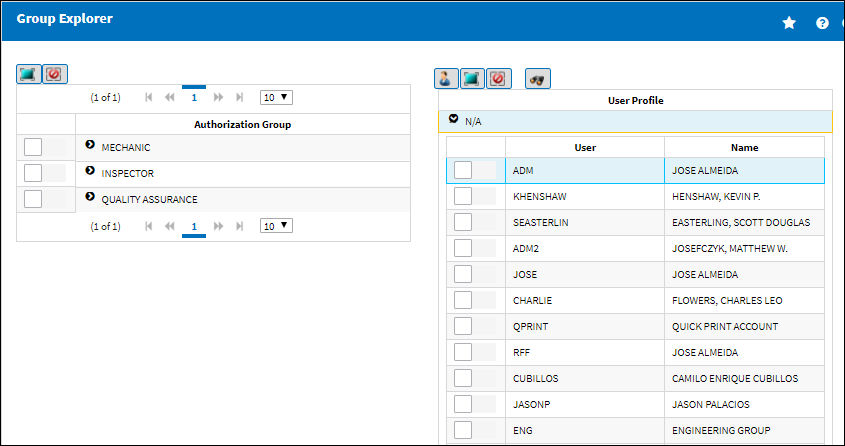
 Share
Share

 Print
Print
Corrosion Level Authorization Group Explorer
The Corrosion Level Authorization Group Explorer allows the System Administrator or other designated users to manage which users are in each specific Corrosion Level Authorization Group. Users are added or deleted from Corrosion Level Authorization Groups who are listed in the screen below.
The user may use the Corrosion Level Authorization Group System Transaction Code to define who is allowed to be part of the authorization process via the Corrosion Level Authorization Group Explorer. Within this window, two sections will be displayed. On the left, a list of the existing Authorization Groups created through the transaction code, and the users/employees assigned to the group(s) when expanded. On the right, a complete listing of the users/employees expanded from their designated User Profile.

Note: In the Corrosion Level Authorization Group Explorer window, users are categorized by the Adopted Group Profile they belong to in the Security Explorer. This is configured for each individual user, and if they are not associated to any Adopted Group Profile, then they fall into the 'N/A' Group Profile by default. For additional information regarding Group Profiles, refer to the System Administration Training Manual.
Here, the user may select the necessary users to be assigned along with the appropriate group(s) to which they will be assigned. Upon selecting the necessary records, select the Add Selected User(s) to Group(s) ![]() button.
button.

Once the Add Selected User(s) to Group(s) ![]() button has been selected, the system will display the following prompt:
button has been selected, the system will display the following prompt:

If Yes is selected the employee will be included in the authorization group and will be part of the defined Corrosion Level authorization process.
If No, then the employee will NOT be included as part of the authorization group and will not be part of the Corrosion authorization process. Similarly a user may be removed from the Corrosion Level Authorization Group by selecting the Remove User ![]() button next to the user under the expanded Authorization Group.
button next to the user under the expanded Authorization Group.


 Share
Share

 Print
Print